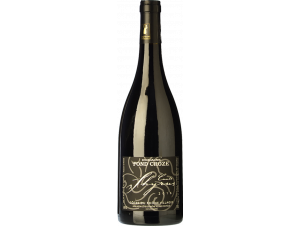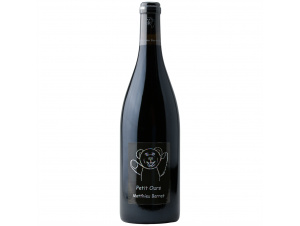You have no items in your shopping cart.
Wine Côtes-du-Rhône
The AOC Côtes du Rhône is a regional appellation that stretches from Vienne to Avignon, i.e. a surface area of 42,000 ha spread over 6 departments. The wines of this appellation are declined under the three colours but their diversities are much more important. The terroirs, the blends and the 23 authorised grape varieties allow this diversity. Read more on Côtes-du-Rhône
-
Top Selling-20%
-
Top Selling
-
Top Selling-20%
- -19%
- -34%
- -31%
- -34%
Appellation Côtes-du-Rhône
The history of Côtes-du-Rhône wines
Archaeology and historical studies allow us today to affirm that the Rhône Valley is one of the first wine regions in the world. Its history begins in 600 BC with the first imports of vine plants by the Greeks. The Romans were responsible for the creation of towns and vineyards on the slopes of the Rhône valley.
The wine history of the northern Rhone valley begins with the Allobroges and the creation of the Vienne vineyard in the 2nd century AD. PLINO the EARLIER refers in "Natural History" to the need for the Allobroges to produce a quality "vinum picatum". It was produced thanks to the vineyards that extended from Vienne to the south of Valence. It is the ancestor of the wines of the northern part of the Côtes du Rhône. The trade of the wines of this region began very early on by sea, river and land, which enabled them to achieve a certain notoriety. The desire to preserve the quality of the wines became a necessity.
Thus, in 1615, the first vineyard plantation delimitation was established on the well-exposed slopes and the first harvest banns were published in order to oblige the harvesting of grapes at maturity. The quality and notoriety of these wines were such that counterfeiting of these products was numerous. In 1737, a decree of the Council of State concerning 10 communes obliged the writing of the letters CDR and the vintage at the bottom of each barrel produced.
During the 18th and 19th centuries, the progression of the wine-growing culture became more widespread and it developed on the left bank of the Rhône. The writings of JB.Dubois in 1806, demonstrate the multitude of grape varieties used for wine making. Nevertheless he highlights that the "Granache" is the grape variety that produces the best wines. The vineyard of the Rhone Valley was not spared by the phylloxera crisis of the late 19th century. Its reconstruction is more or less long according to the regions and ends in 1937 with the recognition by the INAO of the AOC "Côtes du Rhône".
The Côtes-du-Rhône benefit from a diversity of climatic, geological and grape varieties
The AOC Côtes du Rhône is a regional AOC which covers 171 communes, 6 departments (Ardèche, Drôme, Gard, Loire, Rhône and Vaucluse) and 42,000 ha. The natural boundary of the northern part of the vineyard is the 45th parallel.
In the northern part of the appellation the temperate continental climate with Mediterranean influences gives hot, dry summers and freezing winters. The southern part of the appellation has a Mediterranean climate, with higher summer temperatures and milder winter temperatures. The whole area is subject to rainfall mainly in the autumn and winter but summers are marked by violent storms.
The Mistral blows over the AOC more than a hundred days a year, clearing the skies and allowing significant insulation of the vineyard. The power of the wind is reinforced by the relief of the region which forms a corridor and thus causes a venturi effect. This wind dries out the soil and thus limits the installation of cryptogamic diseases.
For red wines from the northern zone, the majority grape variety in the blend is Syrah. For red and rosé wines from the southern part, the Grenache must represent at least 30% of the blend. The Grenache/Syrah/Mourvèdre blend must represent at least 60% of it.
White wines are made from a blend consisting of 80% Grenache blanc, Clairette, Marssanne, Roussane, Bourboulenc and Viognier.
An organoleptic diversity for Côtes-du-Rhône wines
The extent of the AOC and the possibility of blending give a great diversity of products. Since the wines are mostly produced by the southern vineyards, they are a reference for the description of the wines.
The white wines from various blends have a pale yellow colour. The aromatic bouquet is marked by floral and sometimes fruity aromas whose complexity varies according to the grape varieties used. The palate is marked by aromatic power, roundness and freshness. They represent 3% of the production. These wines are to be consumed within 3 years after their vinification.
The rosé wines (4% of production) have a pale pink colour. The nose has aromas of red fruits, with some floral notes. The mouth is fruity, supple and marked by a beautiful freshness. These are wines to be consumed in their youth.
Red wines are the main production of wines from the Côtes de Rhône. The colour of the robe varies according to the blend. The aromatic bouquet gives fruity, floral and spicy notes whose finesse and characteristics vary according to the grape varieties present. The palate is structured more or less lightly depending on the terroir of origin. Indeed, wines whose grapes come from sandy soils will be lighter while those from clay-gravel soils will be more structured. The average ageing period is 2 to 4 years.
A multitude of food and wine pairings for Côtes-du-Rhône
The white wines are best enjoyed as an aperitif. They also accompany a cep risotto, a quiche lorraine, a Salers timbale, marinated white meat or a salmon terrine. Their roundness accompanies cheeses such as reblochon, rigotte and saint-nectaire. The fullness and aromatic finesse allow them to accompany desserts such as doughnuts, speculoos ice cream or crème caramel.
Rosés from the Côtes du Rhône go well as an aperitif with a charcuterie platter, verrines or an omelette cake. The structure of rosés allows them to accompany white meat such as guinea fowl, stuffed vegetables or spicy dishes such as osso buco, lamb tagine, chili con carne or pork curry. They also accompany fish dishes, especially salmon.
Vintages of Côtes-du-Rhône to taste
For white wines we can note recently some very good vintages such as 2005, 2008, 2010, 2012, 2014, 2015, 2016, 2017 and 2018.
For red wines we can note the following good vintages 2000, 2001, 2003, 2005, 2006, 2009, 2010, 2012, 2014, 2015, 2016, 2017 and 2018.
Côtes-du-Rhône estates to discover
The Perrin Family
This is the case of the Perrin Family, owners of Château de Beaucastel. They vinify, the "Nature" cuvée made according to the organic farming regulations applied at Château Beaucastel. The Grenache/Syrah blend gives the wine an aromatic bouquet of red fruit and a silky mouthfeel.Domaine Marcel Richaud
The Marcel Richaud estate is located in Cairanne. Marcel Richaud is one of the major players in the recognition of Cairanne as an AOC village. Demanding for the work he applies to the vineyard with a certification in organic farming, he is just as demanding for the work in the cellar. His wines, both for pleasure and for laying down, are high-flying and deliver a lot of finesse.The Maison Tardieu-Laurent
The Maison Tardieu-Laurent is a family-run wine merchant house based in Loumarin. Michel silionne with his son, Sébastien, the Rhone Valley from North to South in order to unearth the raisins suitable for making the great wines, which they love.
Vallée du Rhône appellations
Côtes-du-Rhône-Villages Laudun
Côtes-du-Rhône-Villages Massif-d'Uchaux
Côtes-du-Rhône-Villages Plan-de-Dieu
Côtes-du-Rhône-Villages Rochegude
Côtes-du-Rhône-Villages Sablet
Côtes-du-Rhône-Villages Séguret
Côtes-du-Rhône-Villages Signargues








































 TWIL - Achat de Vin
TWIL - Achat de Vin


